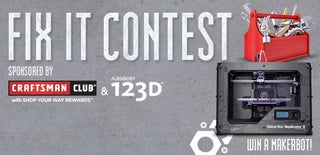Introduction: Replacing the Outer Leather Shell on a Baseball
On my bike commute home a few weeks ago, I found a baseball that had burst its stitching. It seemed interesting enough of an object, so I through it in my bag and brought it home with me. After a little research, I could hardly find any information where anyone had discussed making a baseball, even just the outer layer, so I figured it was up to me.
I spent about 3 hours total on this project - one making the materials and two putting it all together.
Step 1: Materials Needed
Scrap Leather (I used a 10x6 scrap and had space leftover)
Waxed Thread (9 ft or so) - I got this from the leather section in Joann's
2 Upholstery Needles
Baseball That Needs a Makeover
Cup of Warm Water
Patience
Step 2: Remove the Insides
Baseballs are made up of many layers of rubber/cork, varying sizes and lengths of strings, coated in rubber cement, and finally stitched with two leather pieces that are connected in 108 places with a double stitch that has come to be known as the baseball stitch.
I had no need to start from scratch since the insides were fine, but the leather shell on this ball had seen better days. I pulled out the trusty pocket knife and started opening it up a little more until I could pry the core from the leather.
Step 3: Creating a Template
After I had completely separated the two leather pieces, I headed off to the local hackerspace (Pumping Station: One in Chicago!) to scan the leather. Using the scan as a base, I created a pattern in Illustrator to cut out my new pieces on the laser cutter. If you wanted to put a logo, signature, or really anything else on the ball, you could raster it in at this point. I left mine blank. Also, a GIANT thank you goes out to my wife Nina and roommate Christian who were both helpful and extremely patient to walk me through Illustrator and made this project possible.
(I hadn't quite decided which color scheme I'd be using, so I cut them in white, black, and an ivory. I eventually settled on the ivory with black lacing for a twist on the classic/vintage look, although the next ball I find is going to be done in black on black.)
The attached file is the perfect size for an MLB regulation size ball. If you have any other size, you will have to adjust accordingly.
If you do not have access to a laser cutter, I suppose you could print out the pattern and trace it onto the leather, though it would take quite a while to punch all of the holes.
Attachments
Step 4: Begin the Stitching Process
I started off with dry leather until it started to take shape. Given the option again, I would have soaked them from the beginning. It makes the needle slide through so much easier.
The waxed thread it very important. You will be dealing with huge lengths that are likely to get tangled if you do not have waxed thread.
The end of one leather piece lines up with the middle of the other for the first set of stitches.
Take your waxed thread and put a needle on both ends. The center of the thread will start the stitch and from this point on, it's really just a matter of over, under, over, under, just like lacing up a shoe.
Step 5: Insert Baseball Core
It honestly didn't look much like a baseball of any quality yet, but that's ok. It's still coming together.
When the shell was about 3/4 of the way stitched, I soaked my leather (which you should have already done) and squeezed the core into it before finishing up the stitches.
Once the core is inside, make the rest of the stitches all the way around and remove the needles. You should leave a good 6 inches or so hanging out in case something happens and you need to restitch. It's a lot easier than having to start over because your thread it too short.
Step 6: Tighten the Stitches
After the ball was stitched up, I grabbed my needles again and used them to pull the stitches tight all the way around the ball. Since the leather was wet, it stretched well and the stitches have a nice grab on the seams. Working all the way around the ball, you should be able to tighten up any gaps or lose threads from before.
The only part of this project I am not thrilled with is the knot to finish it off. I didn't know how to get it to lie underneath everything, so I have a small square knot in the middle of the two leather pieces which is somewhat noticeable if you are looking for it. If anyone has a suggestion for this, please let me know.
There were a few wax spots that I had to clean off of the leather.
After it all dried overnight, the leather really took shape, and I think it looks even better as a finished project.

















